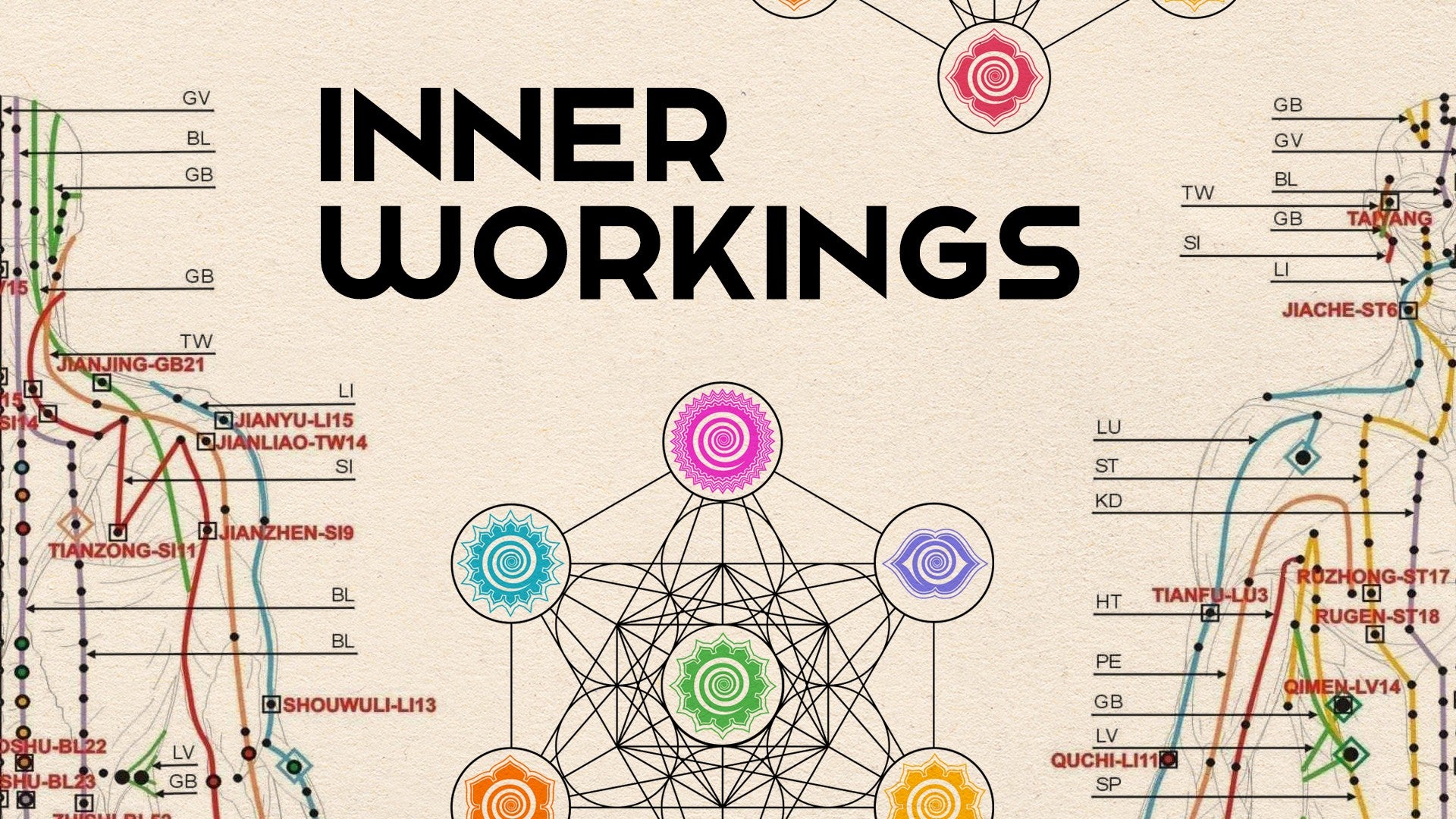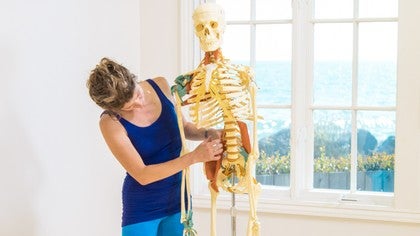Description
About This Video
Transcript
Read Full Transcript
Let's talk about the psoas. This is Mr. Bones. This is his psoas. This is his spine. This is his femur, his thigh bone. The psoas crosses over the pelvis, connecting the spine to the legs. He has one on each side. We only see one here. The attachment point on the femur is at the lesser trochanter. It's on the very high inside of the thigh bone, about at the level of the floor of your pelvis. The origination is at T12, which is the very lowest thoracic vertebrae. All the thoracic vertebrae have ribs attached to them that move against them. All of the ribs are connected to the sac that holds the lungs. The underside of the ribcage is connected to the diaphragm, which moves the lungs. The lungs from the inside are connected to the diaphragm. It's shaped like this. Up here, lungs and heart. Down here, the diaphragm attaches to T12 and down the spine a little ways. The psoas interbrades, mingles with the tissue of the diaphragm. They move together at the top. As the psoas progresses down the spine, it attaches to each of the lumbar vertebrae here on the sides. Then it crosses over the hip socket, where it intermingles with the iliacus, which is why people say the iliopsoas. It crosses over the hip socket, where the thigh bone comes into the acetabulum, which is the source of all of the movement of the leg. Finally, it attaches to the leg. Classically, people refer to the psoas as a hip flexor. This is hip flexion. You have other muscles that do that. My current understanding of the psoas is that it does a much deeper, much more holistic, potentially much more important task for the body, which is to communicate through from the lower body to the upper body, from the upper body to the lower body, along the central core, to transmit information, weight, and movement throughout the organism. The psoas is inside this very close band of connective tissue that's very near to the spine. Unlike its neighbouring muscles, it's with the kidneys and the central nervous system inside the sympathetic neural core. It's indicating that information is indicating how important it is to our sense of self and to our functioning as organisms. What happens is that because of that, because it transmits so much information, it also holds so much information. Over time, it can hold a lot of emotion, and that can cause it to get dry and still in an effort to not release the unpleasant information. It limits our mobility, our experience in our bodies, and it limits our choices. That sounds like bad news, but I think it's really good news because if we can speak to the psoas, not fix it or make it be more like it's supposed to be, but if we can speak to it and if we can listen to our experience in this part of our bodies, we have a chance to impact our entire organism and to listen to and speak to all of ourselves and maybe change some things that we thought we couldn't change about how we are in the world. Among other things that might be impacted by increasing the suppleness, the juiciness of the psoas, you might find walking to be more fluid and less tiring, easier. You might find breathing to be more satisfying, more calming. My understanding is that a supple psoas can also spread the sensations of orgasm through the entire body. So maybe you want to work on this. We're going to do some psoas work in one video that's specifically around exploring the psoas, and in another video that's around the energy centre in the pelvic bowl, and its relationship to the solar plexus centre, which are in the line of the psoas, all of the organs here are touched by the psoas and affected by them.
You might get a better orgasm out of the deal.
Inner Workings: Devon Riley
Comments
You need to be a subscriber to post a comment.
Please Log In or Create an Account to start your free trial.















